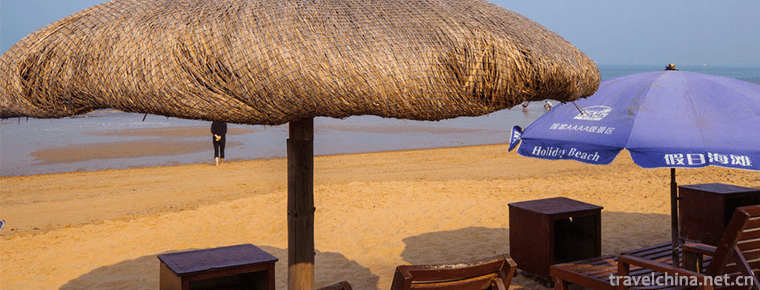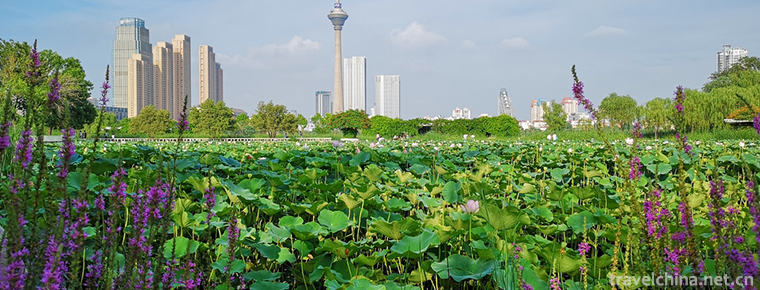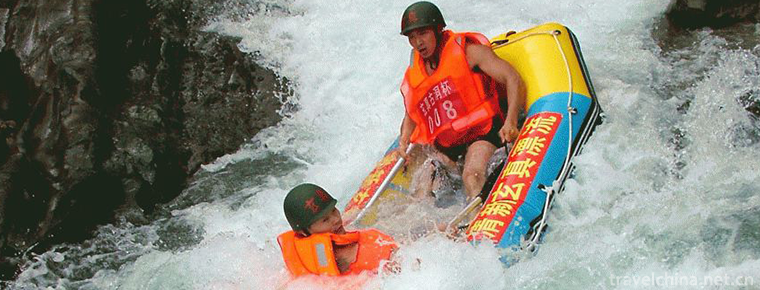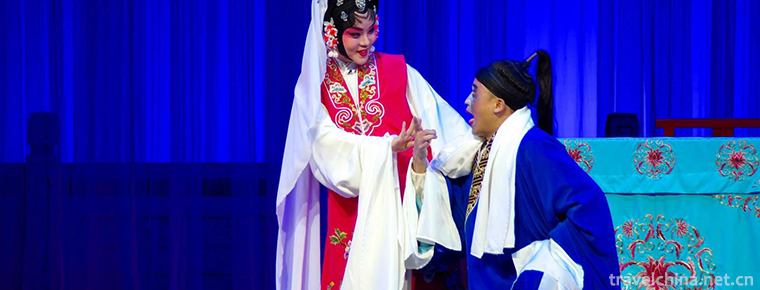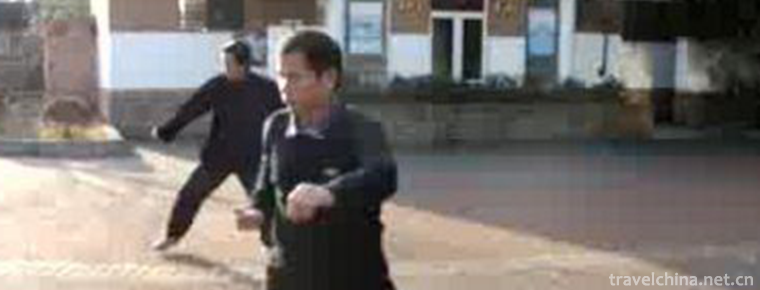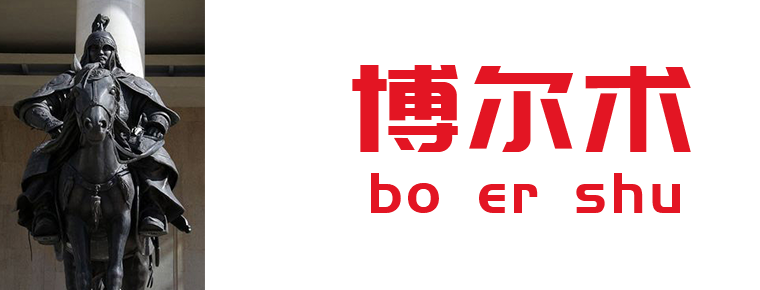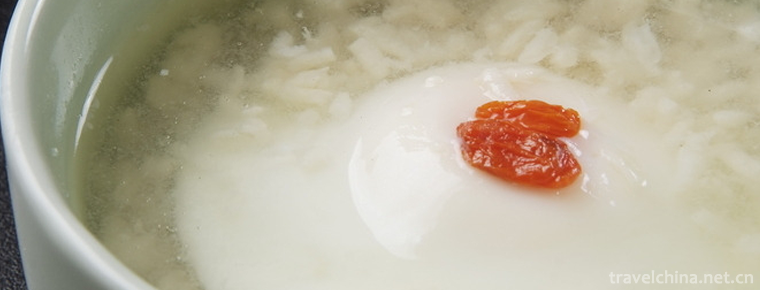Tibetan Gugu Encouragement
Tibetan Gugu Encouragement
Tibetan God inspiration has a long history. As for its origin, there is a legend that one or two hundred years ago, a "Gawa Hubo" (i.e. a local official) in Ningba village danced in the mansion north of the village on the second day of the first lunar month every year. Later, Yongzengcang Living Buddha (about 1881 - 1958) consolidated and standardized this dance at the age of forty and fifty, and this tradition has been followed ever since. Spreaded in Xunhua area of Qinghai Province, it is a Tibetan primitive religious sacrificial dance with a relatively fixed performance form and style. Historically, because it is far away from the political center of Tibet, this area has also been influenced by the Tubo culture, Tuguhun culture, Xixia Jiao culture, Mongolian culture and Han culture.
In June 2008, the Tibetan Drum Encouragement declared by Xunhua Sala Autonomous County of Qinghai Province was listed in the second batch of national intangible cultural heritage list with the approval of the State Council.
Heritage serial number: 689 III-92.
historical origin
"Tibetan Gugu Dance" is a primitive Tibetan religious sacrificial dance, which spreads in Xunhua area of Qinghai Province. It has a relatively fixed performance form and style. Historically, because of its distance from the political center of Tibet and its inconvenience in transportation, Tibetan traditional culture has been preserved in many aspects, such as religion, language, customs and folk arts. Historically, this area has also been influenced by Tubo culture, Tuguhun culture, Xixia culture, Mongolian culture and Han culture.
artistic characteristics
Tibetan Gugu Encouragement. Gugu Encouragement: Tibetan Gugu Encouragement is spread in Xunhua area of Qinghai Province. In the form of collective dance, Tibetan Gugu Encouragement reflects the religious beliefs, labor and life interests and aesthetic concepts of the local Tibetans.
Inheritance significance
In the southeastern part of Qinghai Province, under the Dalika Snow Mountain and the Dongri Yanshan Mountains, and above the Luomen Mountains in the Gala Mountains, the area known in Tibetan history as the Eight Sacred Wheels shrouded all over the fields, and the land like eight lotus petals reflected each other, is now under the jurisdiction of Daoshan Tibetan Township in Xunhua Salar Autonomous County. Ningba village is located here. It is the main birthplace of the second batch of national intangible cultural heritage projects. The ancient land has the essence of sunshine and rain, and has the spirit of all things in the mountains and rivers. Since ancient times, it has been a sacred place for heroes to gallop and the generation of sages.
Tibetan drum dance is a kind of folk sacrificial dance that amuses people and pleases gods. It has a strong Tibetan religious and cultural color. The dance scene is magnificent, momentum is huge, the number of actors is small, then more than a dozen people, more than a hundred people, rough, free and easy movements, rhythm is strong, flexible and changeable dance picture scheduling, drum point when strong and weak, slow and fast, like a storm, slow like lotus floating water, has a strong artistic appeal and strong artistic vitality, giving people a refreshing artistic enjoyment. In the form of collective dancing art, it fully expresses the ideological content of inviting God, revering God, sending God and demon, and fully reflects the religious beliefs of local nationalities, the interest of working life and the aesthetic concept of culture and art. It also fully reflects the characteristics of dance culture on the Qinghai-Tibet Plateau and the relics of primitive religious culture.


-
Dalian Laohutan Ocean Park
Dalian Laohutan Ocean Park is located in the middle of the southern coast of Dalian, a national scenic spot. It covers an area of 1.18 million square meters .
Views: 254 Time 2018-12-02 -
Holiday Beach
Holiday beach is located on the west coastal avenue of Haikou City, which is 6 kilometers long. On the left side is the verdant forest belt of ephedra, with resorts, hotels, playgrounds and so on.
Views: 320 Time 2018-12-23 -
Xinglong mountain
Xinglong Mountain is the nearest National Natural Forest Reserve to Lanzhou City. It is located five kilometers southwest of Yuzhong County, Lanzhou City, 60 kilometers away from Lanzhou City.
Views: 171 Time 2018-12-24 -
Zhao tomb in Qing Dynasty
Zhaoling Tomb of Qing Dynasty, the mausoleum of Taizong Emperor Taiji, the founding monarch of the second generation of Qing Dynasty, is located in the ancient city of Shenyang (Shengjing).
Views: 172 Time 2018-12-26 -
Tianta Lake Scenic Area
Tianta Lake Scenic Spot is located in the south of Tianjin City, close to the water park scenic spot, is the main attraction of Tianjin Radio and Television Tower. Tianta is the Tianjin Radio and Tele.
Views: 207 Time 2019-02-21 -
Xuanzhen Ancient Cave Ecotourism Area
Xuanzhen Gudong Ecotourism Area is located in the north of Qingxin County, about two kilometers away from Qingyuan City. The area of the whole scenic area is 7.8 square kilometers..
Views: 243 Time 2019-02-26 -
Baling Opera
Baling Opera, a local traditional drama in Yueyang City, Hunan Province, is one of the national intangible cultural heritage..
Views: 161 Time 2019-04-02 -
Block door La shou men
Stopper Gate is one of the traditional Chinese boxing schools. It originated in Shaolin and was introduced to Tianjin in the early Qing Dynasty. It originated in Sichuan. It was the earliest southern .
Views: 214 Time 2019-05-10 -
She Nationality Medicine
She medicine is mainly distributed in Jingning She Autonomous County of Zhejiang Province and in some mountainous areas of Fujian and Jiangxi provinces. She nationality has no written language and is .
Views: 128 Time 2019-06-14 -
A er la bo er shu
Al r Bo Er (1162 to 1226) , Mongolia Famous general, Genghis Khan "Four Jun" is the leader of the founding fathers. Formerly known as "Er Chu". As a result of helping the young boy.
Views: 153 Time 2019-09-14 -
Sugar Eggs
Laozao is a local snack, belonging to Sichuan cuisine. Laolao, a kind of wine brewing in ancient Chinese, is a Sichuan dialect, that is, boiled eggs with wine brewing. Put the mash in the pot and boil.
Views: 468 Time 2020-03-09 -
Cheongsam production technology
Most of the classical flag dresses have straight lines. The body is loose and the two sides are split. The bust and waist circumference are close to the size of the dress. The appearance of cheongsam is generally required to have all or part of the following characteristics:.
Views: 144 Time 2020-12-11

